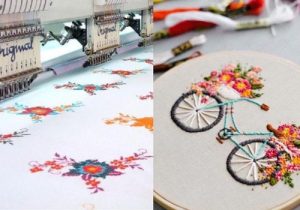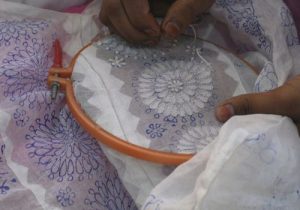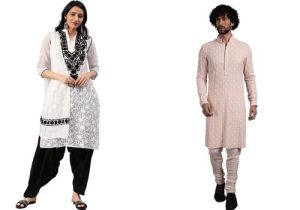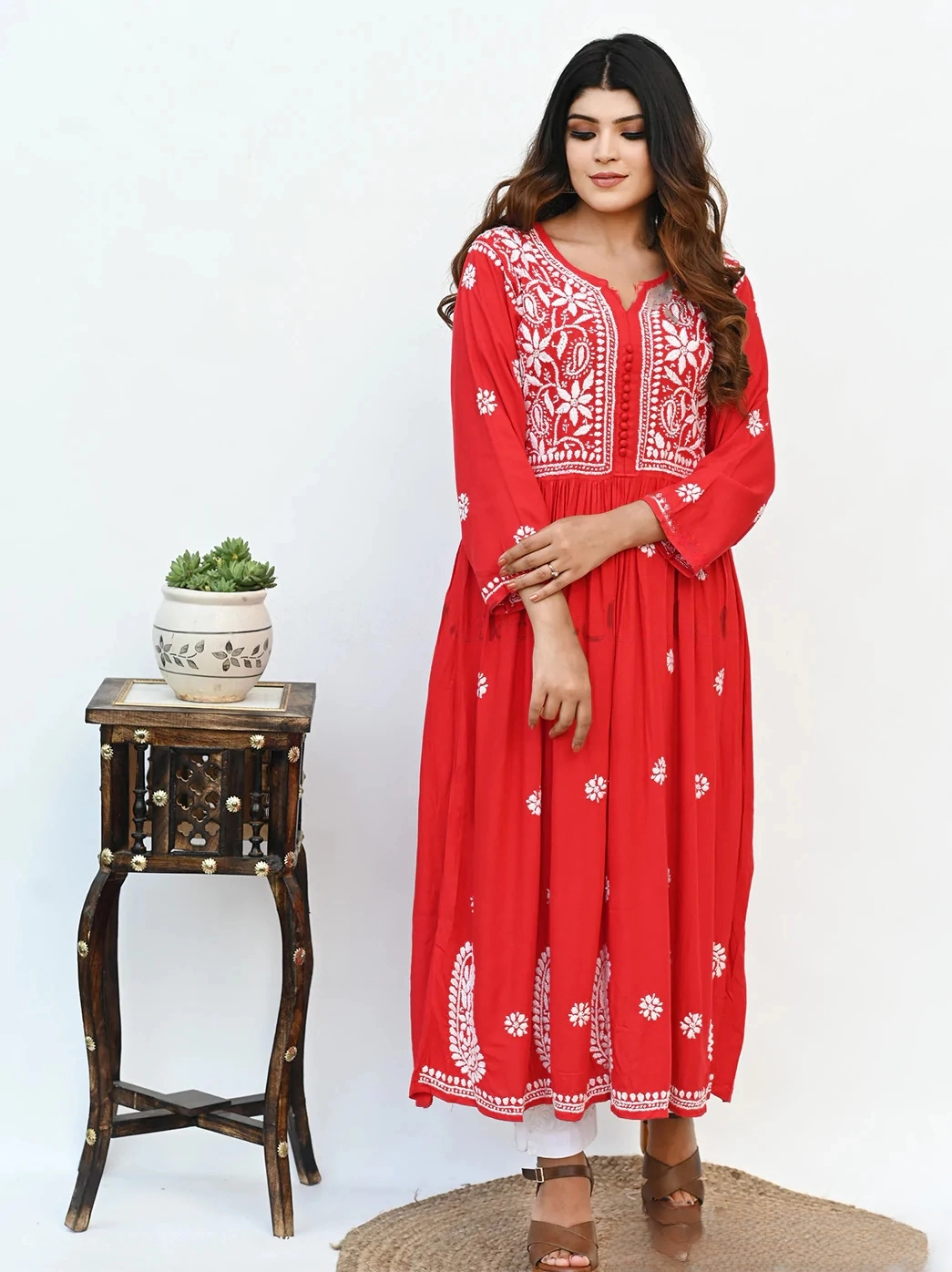Since an early age, humans have been manufacturing various textiles and other products by simply using their hands. So is the case with Lucknowi Chikankari designs that have been flourishing for a long time. Of course, workers need years of experience to become skillful in a certain task. Yet, with time, they become more magnificent in their embroidery chikankari and needlework of Chikankari.
The beginning of needlecraft work consists of creating beautiful handcrafted designs with stitches and embellishments on different fabrics. Likewise, many such forms of art have been created and adapted in other parts of the world.
Read Also: Types of Chikankari Designs
Adaptation of Handicraft & Machine Embroidery Chikankari

With the latest techniques being in use, the usual handcrafted work is now being done using machines. These machines are helpful in such a way that not only will they complete the design on time, but the designs will also be impressive. However, machinery embroidery can never take over the neatness and beauty of handcrafted Chikankari embroidery.
There are a variety of stitches that creates a wonderful design on the fabric. The artisans that create such designs have a skillful experience of more than 5 to 10 years. Hence, they neatly complete every piece of work, giving a more detailed outlook to the clothing. Furthermore, handcrafted Chikankari is highly in demand for its actual depth and process of making. In addition, every piece of handmade Chikankari kurta or dress ranges higher than the machine embroidery chikankari.
Needle Work of Embroidery Chikankari

You can draw beautiful patterns of decorative stitches using different materials through needlework. Knowingly, it’s quite famous as a form of art for designing various Chikankari suits, dresses and other clothing materials.
As we know, Chikankari is a famous form of art where skillful artisans create beautiful patterns using thread, needlecraft and soft fabric. Undoubtedly, these magnificent techniques of creating Chikankari are make the art distinct in itself.
There are many forms of Chikankari stitches. In total, there are 32 patterns of Chikankari stitches, but primarily there are six basic categories.

Check Also: White Chikankari: The Traditional Approach
Moreover, the most popular among them include the following –
- Teaching
- Bakhiya
- Zanzaeera
- Rahet
- Panda
- Khatau
As already said, there are many forms and variants of Chikankari stitches. The above-listed ones are some of the most popular stitches artisans use in making Chikankari kurtas, dresses, suits and other materials.
Chikankari Embroidered Kurtas & Suits

Many people buy Chikankari suits because they look professionally elegant in every manner. Nevertheless, they come in different colours and styles and for all kinds of occasions. Especially if you are buying a Chikankari kurta, Anarkali or even a shirt, they are primarily available in cotton material.
The ancient technique of Chikankari embroidery includes a variety: bakhiya, murri, jaali, ghas patti, etc. All these patterns are unique in themselves but also elegantly beautiful. Moreover, we want you to know that there are a variety of Chikanakari materials, but the genuine ones will feel different in touch. Thus, you can always rely on us and purchase beautiful Chikankari dresses from our website.
Handcrafted Embroidery Chikankari: A Source of Income
There are many designs and embroidery chikankari patterns of Chikankari handcrafted work. Every embroidery that’s handcrafted on a fabric depends upon the material and nature of the designing pattern. Let’s say the fabric that needs to be embroidered by Chikanakari is silk. In that case, artisans can only use light thread with a single needle so that it does not degrade the quality of the material.
In the early days, when Chikankari art was more of a women’s work, it gradually became a source of income for most artisans. That’s how there are so many men on the local level who have learned this art form and are drawing good income from it. Thus, handcrafted Chikankari is a greater source of income for thousands of workers.
Related Articles:
https://aabroochikankari.com/steps-of-making-chikankari/
https://aabroochikankari.com/history-of-chikankari/
https://aabroochikankari.com/embroidery-chikankari-needle-work/

